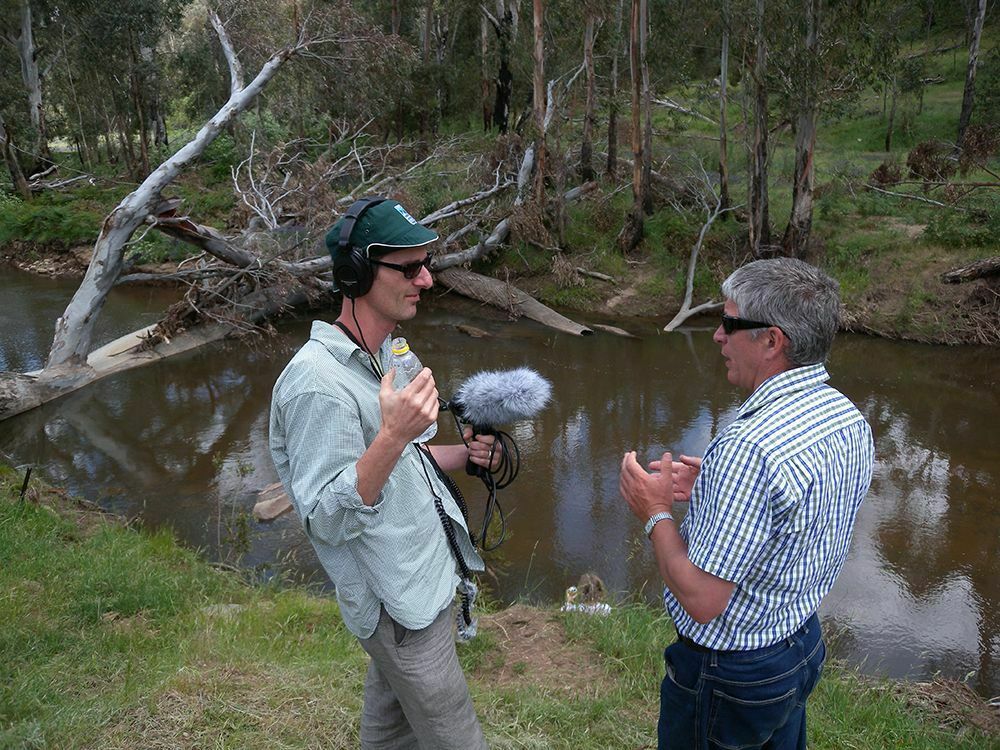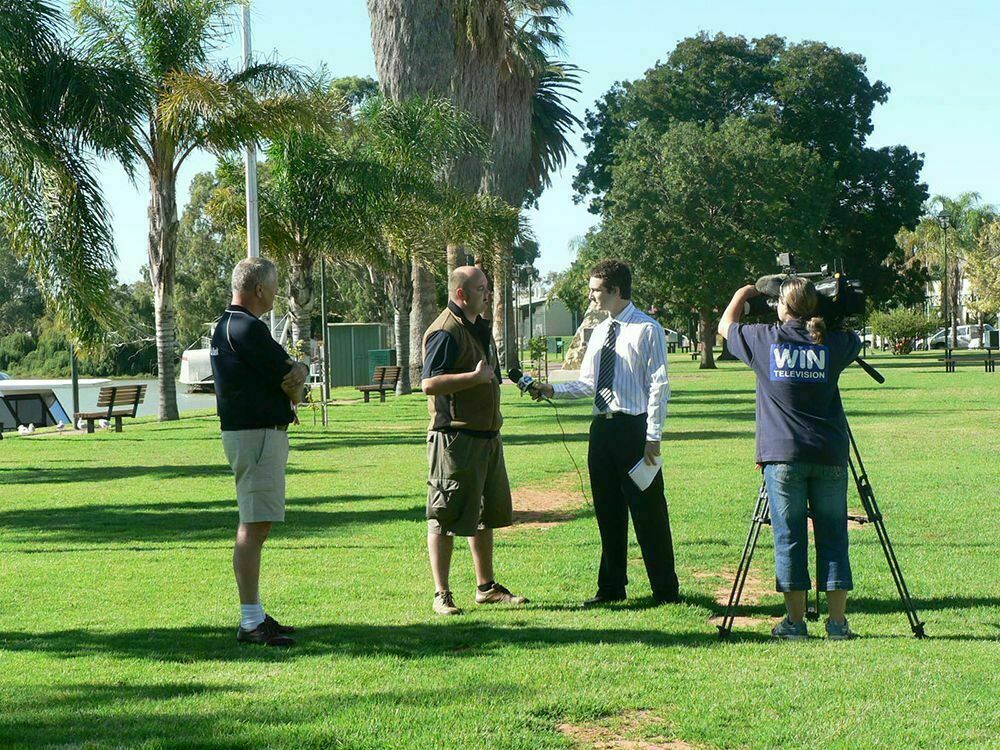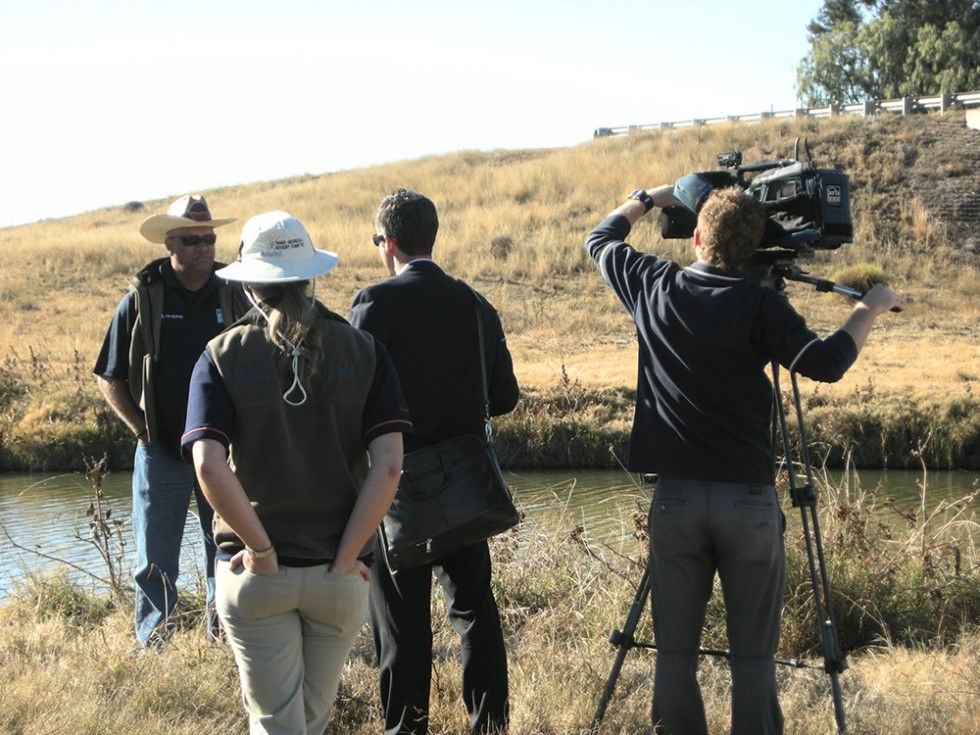The NFS used many forms of media as tools to cover aspects of the engagement spectrum – from informing, engaging and consulting. This began with promoting the regional visits across the Basin to seek input to the development of the strategy and to increase awareness of the program. Once the NFS Strategy had been released, the activities of the Community Stakeholder Taskforce, NFS coordinators and particular research projects were promoted through regional, local and State media sources.
In particular, the NFS tours and Native Fish Awareness (NFS) weeks were promoted through local newspaper articles, regional TV and radio interviews. The emphasis on using media to promote the NFS activities increased over time. As the NFA weeks broadened to include events in each jurisdiction, the increasing media promotion led to greater community participation and awareness. In 2011, a specific media and community relations strategy was developed by external consultants. This provided a valuable guide to the NFS team, although implementation of the many recommendations was restricted due to budgetary constraints. The 2011 approach included the creation of a temporary website to promote the NFA week activities across the Basin, and the use of a clear promotional brand of ‘Habitat makes fish happen’ which proved useful, and was used as the title of a RipRap Magazine which was widely read . After each NFS tour and NFA week, the NFS team including coordinators and CST reviewed the success and approaches to media promotion. Monitoring of media output and uptake was undertaken during NFA weeks and other events such as Carp musters, and helped guide future plans for use of media.


Particular media projects included a strong website presence to disseminate information to a broad audience, including the True Tales of the Trout Cod and Sustaining River Life. Demonstration Reaches varied in the level of their website presence and use of different media avenues, although some such as the Dewfish Demonstration Reach provided a comprehensive engagement tool. The Talking Fish project recognised the value of producing information in a variety of forms, including booklets, webpages, and radio programs of the oral histories within specific river catchments. Some NFS resources were available on the MDBA website including flyers, fact sheets, research reports, annual reports, workshop and forum reports.
Many lessons have been learnt across the NFS regarding approaches to using media. In general NFS team members including the NFS coordinators and CST members would organise media as an additional component of their activities. When there was specific support from dedicated media staff, there was greater potential to maximise media promotion and opportunities. During many events there would be a variety of jurisdictional representatives involved. This sometimes led to difficulties in using media to promote activities because of the varying government requirements associated with approvals, media unit assistance and other competing priorities. There were also restrictions on some government staff being permitted to engage with media. CST members had more flexibility in this regard and could provide a more direct voice to the media.


The NFS coordinators over time began to develop strong local media contacts, which helped spread the word about activities and events, particularly those associated with Demonstration Reaches. This led to local editors contacting them directly for stories or articles and running editorials with advertising at reduced rates. Since the NFS tied in closely with other events and field days, there were many opportunities for NFS promotion through other networks and organisations’ media approaches, including CMA, NRM and Landcare.
The NFS recognised that while traditional methods such as radio and print were effective to engage with older members of the community, there was a need to increase the use of new forms of social media to increase contact with a younger audience. This had begun to be explored. The NFS Coordinators recognised there were other media opportunities which they touched on but hadn’t the time or resources to fully or regularly explore, including articles for fishing magazines and emerging social media.
